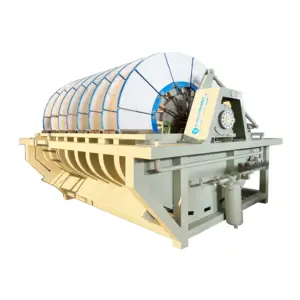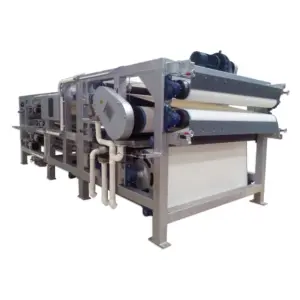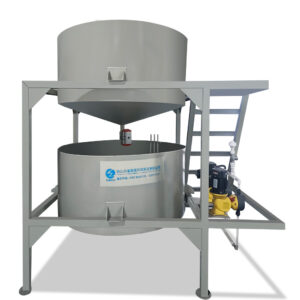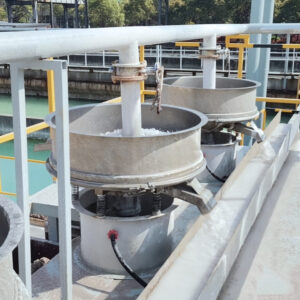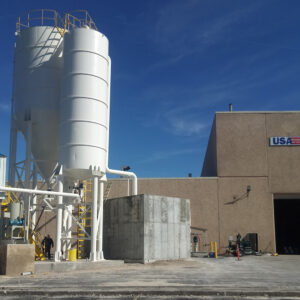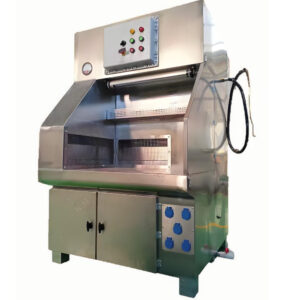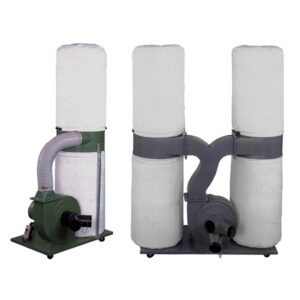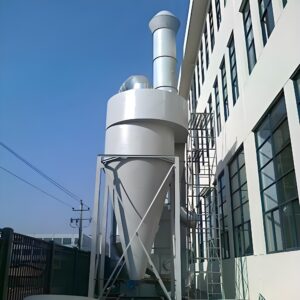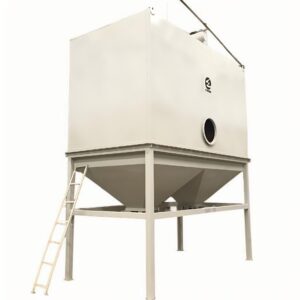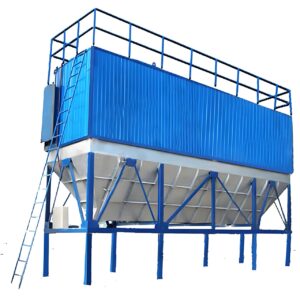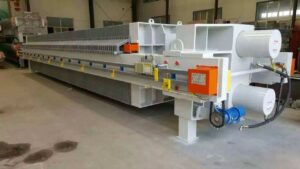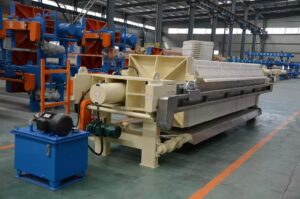Advanced water treatment represents a paradigm shift from reactive maintenance to predictive, intelligent water management systems. Unlike conventional methods that rely on manual monitoring and basic filtration, PORVOO Clean Tech modern systems integrate artificial intelligence, IoT sensors, and automated controls to deliver unprecedented treatment precision.
Core Components of Smart Systems
The foundation of intelligent water treatment lies in three interconnected elements: real-time monitoring networks, adaptive processing algorithms, and automated response mechanisms. These systems utilize over 50 different sensor types to continuously analyze water quality parameters, from basic pH and dissolved oxygen levels to complex molecular compositions and bacterial contamination indicators.
Advanced oxidation processes (AOPs) have emerged as game-changing technologies, achieving 99.9% contaminant removal rates compared to 85-90% for traditional methods. These processes utilize ozone, UV light, and hydrogen peroxide combinations to break down even the most persistent organic pollutants at the molecular level.
Integration with Existing Infrastructure
Modern smart water treatment features seamlessly integrate with legacy systems through modular design approaches. Retrofit capabilities allow facilities to upgrade incrementally, minimizing disruption while maximizing return on investment. A recent automotive manufacturing plant reduced water consumption by 35% within six months of implementing smart monitoring overlays on existing treatment infrastructure.
However, integration complexity can pose challenges, particularly in facilities with aging equipment or non-standardized control systems. Successful implementation requires thorough compatibility assessments and often necessitates custom interface development.
| Technology Component | Efficiency Improvement | Implementation Timeline | ROI Period |
|---|---|---|---|
| AI-Powered Monitoring | 25-40% | 3-6 months | 18-24 months |
| Automated Chemical Dosing | 15-25% | 2-4 months | 12-18 months |
| Predictive Maintenance | 30-45% | 6-12 months | 24-36 months |
How Do Smart Water Treatment Features Transform Industrial Operations?
Smart water treatment features revolutionize industrial operations by replacing human guesswork with data-driven precision. These systems process over 10,000 data points per minute, enabling real-time adjustments that maintain optimal treatment conditions regardless of influent variability or operational changes.
Predictive Analytics and Machine Learning
Machine learning algorithms analyze historical performance data to predict equipment failures before they occur. In our experience working with petrochemical facilities, predictive maintenance capabilities reduce unplanned downtime by 65% while extending equipment lifespan by 20-30%. These systems learn from operational patterns, identifying subtle performance deviations that human operators might miss.
The technology excels in complex scenarios where multiple variables interact simultaneously. For instance, when treating wastewater containing varying concentrations of heavy metals, oil, and suspended solids, AI algorithms continuously optimize chemical dosing rates, aeration levels, and settling times to maintain consistent effluent quality.
Automated Process Optimization
Comprehensive wastewater treatment solutions incorporate automated optimization algorithms that adjust operational parameters in real-time. These systems respond to influent quality changes within seconds, maintaining treatment efficiency even during shock loading events or unexpected contamination incidents.
A textile manufacturing facility implemented smart controls across their biological treatment processes, achieving 92% BOD removal consistency compared to 75-85% with manual operations. The system automatically adjusts aeration patterns, nutrient dosing, and sludge wasting schedules based on microbial activity indicators and effluent quality trends.
Real-Time Quality Monitoring
Advanced spectroscopic analyzers provide continuous water quality assessment without sample collection or laboratory delays. These instruments detect contaminant concentrations at parts-per-billion levels while monitoring dozens of parameters simultaneously. The immediate feedback enables process adjustments before quality deviations affect final effluent characteristics.
While these monitoring systems offer exceptional precision, they require specialized calibration and maintenance protocols that may challenge facilities lacking technical expertise.
What Makes Automated Wastewater Processing Systems Revolutionary?
Automated wastewater processing systems transform treatment efficiency through intelligent control networks that eliminate human error while optimizing resource utilization. These systems process complex treatment sequences autonomously, managing everything from preliminary screening to final disinfection without constant supervision.
Advanced Control Algorithms
Revolutionary control algorithms utilize fuzzy logic and neural networks to manage treatment processes that traditional PID controllers cannot handle effectively. These systems excel in managing non-linear biological processes where conventional automation struggles. For example, activated sludge systems benefit enormously from AI-driven dissolved oxygen control that adapts to varying organic loading rates and temperature fluctuations.
Multi-Parameter Process Control
Modern automated systems simultaneously optimize multiple treatment objectives: effluent quality, energy consumption, chemical costs, and sludge production. This holistic approach achieves results impossible with single-parameter optimization. A food processing plant reduced total treatment costs by 28% while improving effluent quality by implementing multi-objective optimization algorithms.
The technology manages complex trade-offs intelligently. When energy costs peak during high-demand periods, the system automatically adjusts aeration patterns to maintain treatment performance while minimizing electricity consumption.
Adaptive Response Capabilities
Revolutionary systems adapt to changing conditions without human intervention. During storm events or production surges, advanced wastewater technology automatically adjusts treatment capacity, chemical dosing rates, and hydraulic loading patterns to maintain compliance. These adaptive responses occur within minutes rather than hours required for manual adjustments.
However, the sophistication of these systems requires comprehensive operator training and robust cybersecurity measures to protect against digital threats that could compromise treatment operations.
| Process Control Feature | Traditional Systems | Automated Systems | Performance Gain |
|---|---|---|---|
| Response Time | 2-4 hours | 5-15 minutes | 85% faster |
| Parameter Optimization | Single variable | Multi-variable | 40% efficiency |
| Adaptation Speed | Days/weeks | Real-time | 95% faster |
| Operator Requirements | 24/7 supervision | Exception management | 70% reduction |
How Do Intelligent Water Treatment Systems Optimize Performance?
Intelligent water treatment systems optimize performance through continuous learning algorithms that improve treatment strategies based on operational experience and changing conditions. These systems develop increasingly sophisticated responses as they accumulate operational data and encounter diverse treatment scenarios.
Dynamic Process Modeling
Intelligent systems create and continuously update digital twins of treatment processes, enabling virtual testing of operational strategies before implementation. These models accurately predict treatment outcomes under various scenarios, allowing operators to optimize performance proactively rather than reactively. According to recent research from the Water Environment Federation, facilities using digital twin technology achieve 22% better energy efficiency compared to conventional operations.
Energy Optimization Strategies
Smart energy management represents a crucial performance optimization dimension. Intelligent systems coordinate equipment operation with electricity pricing, renewable energy availability, and treatment demands to minimize energy costs. A pharmaceutical manufacturing facility reduced energy consumption by 34% through intelligent pump scheduling and aeration optimization that maintained treatment performance while avoiding peak electricity rates.
Chemical Usage Optimization
Advanced dosing algorithms minimize chemical consumption while maintaining treatment effectiveness. Machine learning models analyze water chemistry patterns to predict optimal coagulant, flocculant, and disinfectant doses with precision impossible through manual control. These systems reduce chemical costs by 20-35% while improving treatment consistency.
The technology excels in managing seasonal variations and industrial discharge patterns that affect chemical requirements. Rather than maintaining excessive safety margins, intelligent systems apply precise dosing based on real-time water quality analysis and predictive modeling.
Industry consensus suggests that facilities implementing intelligent wastewater processing systems achieve 15-25% operational cost reductions within the first year of operation while improving regulatory compliance rates to over 98%.
Maintenance Scheduling Intelligence
Predictive maintenance capabilities extend beyond simple failure prevention to optimize maintenance schedules for maximum equipment availability and minimum lifecycle costs. These systems analyze vibration patterns, temperature trends, energy consumption changes, and performance indicators to schedule maintenance activities during planned downtime periods.
A municipal water treatment plant implemented intelligent maintenance scheduling across their entire facility, reducing maintenance costs by 30% while eliminating 95% of emergency repairs through proactive intervention strategies.
What Are the Key Benefits of High-Tech Water Treatment Solutions?
High-tech water treatment solutions deliver quantifiable benefits that transform both operational performance and environmental compliance. These advantages extend beyond simple efficiency improvements to encompass comprehensive operational transformation.
Operational Excellence Achievements
Advanced systems consistently deliver superior performance metrics across all treatment parameters. Energy consumption reductions of 25-45% are typical, while chemical usage decreases by 20-35% without compromising effluent quality. These improvements result from intelligent optimization that eliminates wasteful operations and maximizes resource utilization efficiency.
Treatment consistency represents another significant advantage. While conventional systems experience 15-25% performance variation due to operational fluctuations, intelligent systems maintain variation within 3-5% ranges through continuous optimization and predictive control strategies.
Regulatory Compliance Enhancement
Smart treatment systems achieve near-perfect compliance rates by continuously monitoring discharge parameters and adjusting treatment processes before violations occur. This proactive approach eliminates costly regulatory penalties and reduces environmental liability exposure. A chemical manufacturing facility achieved 100% compliance over 18 months after implementing comprehensive monitoring and control automation.
Economic Impact Analysis
The economic benefits extend beyond operational savings to include reduced insurance costs, lower environmental liability, and improved asset utilization. Total cost of ownership reductions typically range from 30-50% over 10-year periods when considering all direct and indirect benefits.
Capital efficiency improvements deserve particular attention. Intelligent systems often require 20-30% smaller treatment infrastructure due to optimized performance, reducing both initial investment and ongoing maintenance requirements.
Environmental Performance Benefits
Advanced treatment achieves environmental performance levels impossible with conventional technology. Contaminant removal rates exceed 95% for most parameters, while energy-efficient operations reduce carbon footprints by 35-40%. These improvements support corporate sustainability goals while delivering competitive operational advantages.
However, the technology requires significant upfront investment and specialized expertise that may challenge smaller organizations or those with limited technical resources.
| Benefit Category | Performance Improvement | Timeline | Sustainability Impact |
|---|---|---|---|
| Energy Efficiency | 25-45% reduction | 6-12 months | High |
| Chemical Usage | 20-35% reduction | 3-6 months | Medium |
| Compliance Rate | 95%+ achievement | Immediate | High |
| Maintenance Costs | 30-40% reduction | 12-18 months | Medium |
How to Choose the Right Advanced Wastewater Technology?
Selecting appropriate advanced wastewater technology requires systematic evaluation of operational requirements, technical capabilities, and long-term strategic objectives. The decision process must balance performance needs with implementation complexity and economic considerations.
Assessment Framework Development
Successful technology selection begins with comprehensive facility assessment covering current performance limitations, regulatory requirements, expansion plans, and available technical resources. This assessment identifies specific treatment challenges that advanced technology must address while establishing realistic performance expectations and implementation timelines.
Technology Compatibility Analysis
Compatibility with existing infrastructure significantly impacts implementation success and total project costs. Facilities with modern control systems and standardized equipment typically achieve smoother integration, while older facilities may require extensive upgrades. In our experience, compatibility assessments prevent 70% of integration problems that otherwise emerge during implementation phases.
Vendor Evaluation Criteria
Technology providers vary significantly in their capabilities, support services, and long-term viability. Evaluation criteria should emphasize proven performance records, comprehensive training programs, ongoing technical support, and financial stability. It’s worth noting that the lowest initial price rarely delivers the best long-term value due to hidden integration costs and inferior support services.
Successful implementations require vendors with deep application experience in similar industrial environments and demonstrated expertise in system integration rather than simply equipment supply.
Implementation Planning Strategies
Phased implementation approaches minimize operational disruption while allowing learning and optimization throughout the upgrade process. Pilot testing of critical technologies provides valuable performance validation and operator training opportunities before full-scale deployment.
The most successful projects establish clear performance metrics, comprehensive training programs, and well-defined support protocols before beginning implementation activities.
What Does the Future Hold for Smart Water Treatment?
The future of smart water treatment technology promises increasingly sophisticated automation capabilities driven by artificial intelligence advancement and expanding sensor technology applications. These developments will transform water treatment from reactive maintenance to predictive, self-optimizing systems that require minimal human intervention.
Emerging Technology Trends
Artificial intelligence capabilities continue expanding beyond current process optimization to encompass predictive modeling, autonomous decision-making, and self-learning adaptation mechanisms. Next-generation systems will integrate quantum computing capabilities for complex optimization problems and blockchain technology for secure data management and regulatory reporting.
Advanced materials science is developing new membrane technologies, catalysts, and sensor systems that will enable treatment capabilities currently impossible with existing technology. These innovations will address emerging contaminants like pharmaceuticals, microplastics, and endocrine disrupting compounds.
Industry Evolution Predictions
Industry experts predict that smart water treatment systems will become standard requirements rather than premium options within the next decade. Regulatory pressures, environmental concerns, and economic advantages will drive widespread adoption across industrial sectors.
The technology will evolve toward complete treatment ecosystem integration, managing not only wastewater treatment but also water recovery, resource extraction, and energy production from waste streams.
Strategic Planning Considerations
Organizations planning long-term water treatment strategies must consider technology evolution trajectories, regulatory development trends, and sustainability requirements that will shape future operations. Early adoption of scalable smart technologies positions facilities for seamless upgrades as capabilities advance.
The investment in advanced treatment infrastructure today provides foundation capabilities that support future technology integration while delivering immediate operational benefits and competitive advantages.
Advanced water treatment technology represents a fundamental shift toward intelligent, sustainable water management that delivers superior performance while reducing operational costs and environmental impact. The combination of AI-driven optimization, predictive maintenance, and automated control systems enables treatment efficiency levels impossible with conventional approaches. Organizations implementing these technologies achieve 25-45% energy reductions, 20-35% chemical savings, and near-perfect regulatory compliance rates.
The technology’s ability to adapt, learn, and optimize continuously ensures that performance improvements compound over time rather than remaining static. While implementation requires significant upfront investment and technical expertise, the long-term benefits encompass operational excellence, environmental stewardship, and competitive advantage that justify the commitment.
Key success factors include thorough compatibility assessment, phased implementation strategies, comprehensive operator training, and ongoing vendor support relationships. The future promises even more sophisticated capabilities that will further transform water treatment into autonomous, self-optimizing systems.
Are you ready to explore how advanced water treatment technology can transform your facility’s performance and environmental impact? What specific treatment challenges could benefit most from intelligent automation and predictive optimization capabilities?
Frequently Asked Questions
Q: What are Advanced Water Treatment Features | Smart System Overview?
A: Advanced Water Treatment Features | Smart System Overview refers to the latest technology innovations integrated into water treatment systems that improve efficiency, safety, and water quality. These systems include smart sensors, automated monitoring, membrane filtration, and energy-efficient processes designed to ensure that water is thoroughly purified while minimizing waste and operational costs. The overview covers both residential and commercial solutions that use technology to optimize water treatment performance in real time.
Q: How do membrane filtration technologies fit into advanced water treatment systems?
A: Membrane filtration is a core component of Advanced Water Treatment Features | Smart System Overview. It uses semi-permeable membranes to remove bacteria, viruses, dissolved salts, and organic contaminants from water. This process ensures a higher purity level by physically separating impurities. Membrane technology is favored because it is highly effective and can be combined with smart controls for automatic system adjustments depending on water quality.
Q: What role do smart systems play in modern water treatment?
A: Smart systems enhance advanced water treatment by incorporating sensors and automation to monitor water quality continuously. These features allow real-time adjustments and predictive maintenance, helping to reduce energy consumption and chemical usage while ensuring optimal treatment results. Integration of smart technologies enables data collection for performance analysis and remote system management, aligning with sustainability goals.
Q: What types of contaminants can advanced water treatment systems remove?
A: Advanced Water Treatment Features | Smart System Overview include technologies that remove a wide range of contaminants, such as:
- Pathogenic microorganisms (bacteria, viruses)
- Chemical pollutants like chlorine, volatile organic compounds (VOCs), and ammonia
- Nutrient pollutants such as nitrogen and phosphorus
- Sediments and suspended solids
These features ensure water is safe for drinking, industrial, or agricultural use.
Q: Can advanced water treatment systems be used for wastewater recycling?
A: Yes, advanced water treatment systems are essential for wastewater recycling. They combine biological, chemical, and physicochemical processes—such as flocculation, sedimentation, membrane filtration, and advanced oxidation—to treat wastewater thoroughly. Smart system integration further improves efficiency and safety, supporting sustainable water management by reclaiming water for reuse in residential, commercial, or environmental applications.
Q: What benefits does a smart system overview provide to water treatment management?
A: A smart system overview offers comprehensive insights into all operational aspects of water treatment technology. Benefits include:
- Real-time monitoring of water quality and system health
- Automated adjustments to optimize performance and reduce waste
- Predictive maintenance to prevent failures and prolong equipment life
- Enhanced reporting capabilities for regulatory compliance and sustainability tracking
This holistic overview guides operators and users in maintaining the highest standards of water treatment efficiency.
## External Resources 1. [Smart Water Infrastructure: Transforming Water Management](https://www.sandtech.com/insight/smart-water-infrastructure-transforming-water-management/) - This resource outlines how smart water infrastructure, powered by AI and real-time data collection, is revolutionizing water treatment and distribution operations. 2. [Smart Water Treatment: Future of Sustainable Water Systems](https://trityenviro.com/bd/the-cutting-edge-technology-behind-smart-water-treatment-systems/) - Discusses the impact of IoT, AI, and advanced analytics on water quality monitoring, predictive maintenance, and sustainable water treatment. 3. [Smart Water Treatment with Advanced Sensors](https://www.numberanalytics.com/blog/advanced-sensors-for-water-treatment) - Highlights the role of advanced sensors in real-time process optimization, cost reduction, and enhanced sustainability in water treatment systems. 4. [Smart Technologies for Water Resource Management](https://pmc.ncbi.nlm.nih.gov/articles/PMC9414186/) - Reviews smart system applications such as remote monitoring, automated control, and advanced sensor integration for efficient water resource management. 5. [Intelligent Water Systems Overview (EPA)](https://www.epa.gov/system/files/documents/2024-04/cwsrf-intelligent-water-systems.pdf) - Provides an overview of intelligent water system features including telemetry, advanced metering, and real-time controls in modern water management. 6. [Overview of Smart Water Monitoring and Management Systems](https://www.researchgate.net/publication/354572612_Smart_Water_Monitoring_and_Management_System_A_Comprehensive_Review) - Offers a comprehensive review of smart water monitoring technologies and their role in improving system efficiency and water quality. 